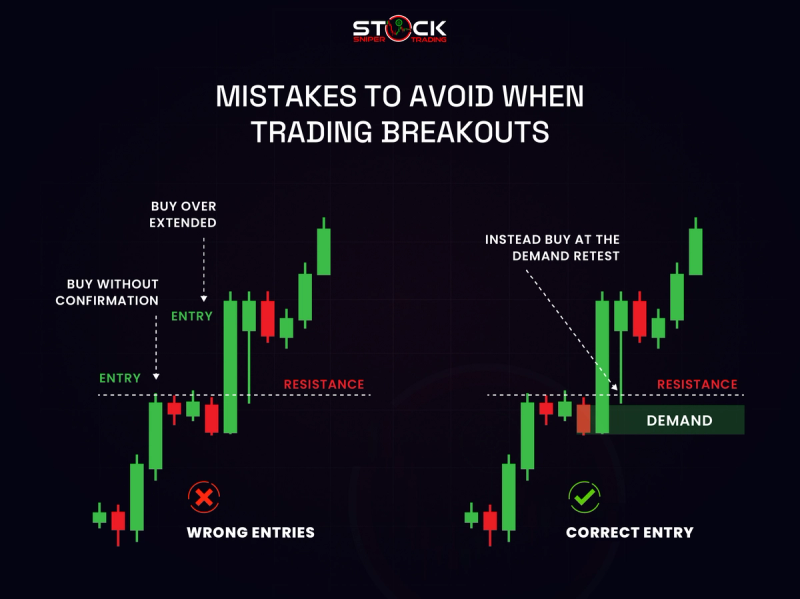
Trading breakouts can be an effective strategy for capturing significant price moves, but it also comes with risks that can lead to substantial losses if not managed properly. Here are some common mistakes to avoid when trading breakouts, along with explanations for each:
1. Ignoring Confirmation Signals
- - Description: Traders often enter a breakout trade immediately as the price moves above a resistance level or below a support level without waiting for confirmation.
- - Explanation: Breakouts can be deceptive; price might temporarily breach a level only to reverse. Wait for confirmation, such as a close above the breakout level or additional bullish signals, to validate the breakout before entering a trade.
2. Overtrading Breakouts
- - Description: Traders frequently enter multiple trades on every breakout they see, regardless of the context.
- - Explanation: Not every breakout is a good opportunity. Overtrading can lead to increased transaction costs and emotional burns. Focus on quality setups that meet your criteria rather than trading every breakout indiscriminately.
3. Setting Inadequate Stop-Losses
- - Description: Many traders either set stop-loss orders too close to the breakout point, risking getting stopped out by normal market fluctuations, or fail to set stop-losses at all.
- - Explanation: Protecting your capital is crucial. Set stop-loss orders at strategic levels (e.g., just below the breakout point) to manage risk effectively. This allows for wiggle room while still protecting against larger losses.
4. Failing to Consider Volume
- - Description: Traders often overlook the importance of trading volume during a breakout.
- - Explanation: A strong breakout should ideally be accompanied by increased volume, as this indicates strong buyer or seller interest. Low volume can indicate a lack of conviction in the move and increases the risk of a false breakout.
5. Ignoring Market Conditions
- - Description: Entering breakout trades without considering broader market trends or economic conditions.
- - Explanation: Market sentiment and external factors can influence the effectiveness of breakouts. For instance, trading in a trending market may yield different results than during a period of high volatility or uncertainty. Always assess the market environment before executing breakout trades.
6. Chasing Price
- - Description: Entering trades after a breakout has already occurred and the price has moved significantly in one direction.
- - Explanation: Chasing price might lead to entering at significantly unfavorable levels. It’s often better to wait for a pullback or a retest of the breakout level for a more manageable entry point.
7. Ignoring Risk-Reward Ratios
- - Description: Some traders enter breakout trades without evaluating potential risk versus reward.
- - Explanation: A favorable risk-reward ratio is essential for long-term profitability. Before entering a trade, assess how much you are willing to risk relative to your target profit. A common guideline is aiming for a minimum of a 1:2 or 1:3 risk-reward ratio.
8. Not Having a Trading Plan
- - Description: Trading breakouts without a clear plan or strategy in place.
- - Explanation: Traders should have well-defined criteria for entry, exit, and risk management. A solid trading plan helps maintain discipline and reduces emotional trading decisions based on market fluctuations.
9. Failure to Adapt
- - Description: Sticking to a single breakout strategy without adapting to changing market conditions.
- - Explanation: Markets constantly change. Be willing to adapt your strategies based on new information, changed trends, or evolving market dynamics. Flexibility can help improve trading outcomes.
10. Neglecting Emotional Control
- - Description: Allowing emotions like fear or greed to drive trading decisions.
- - Explanation: Emotional trading can lead to impulsive decisions, such as exiting trades too early or holding onto losing positions. Maintaining discipline and adhering to your trading plan is crucial for long-term success.
By being aware of these common mistakes when trading breakouts, traders can enhance their strategies, practice proper risk management, and ultimately improve their trading success.

